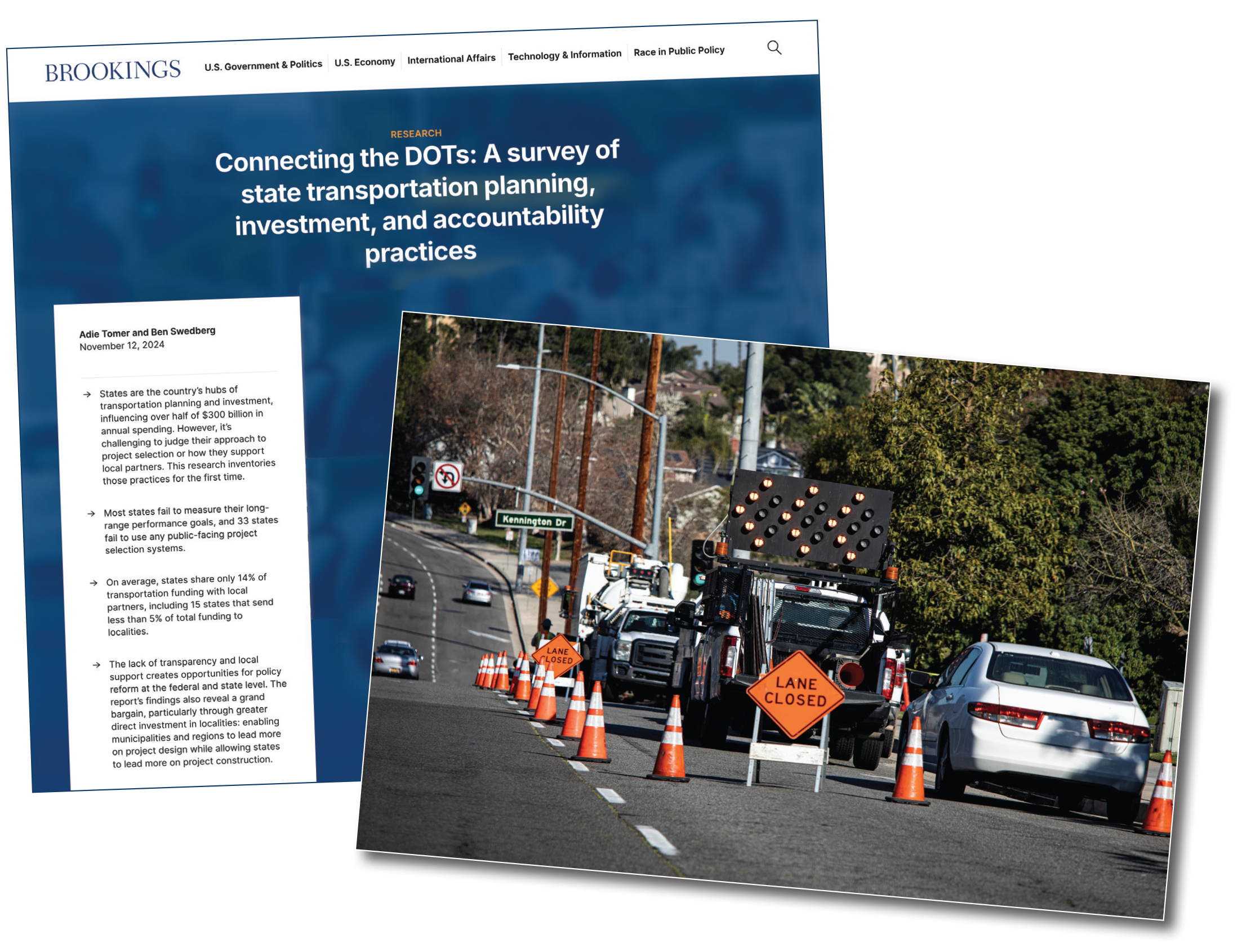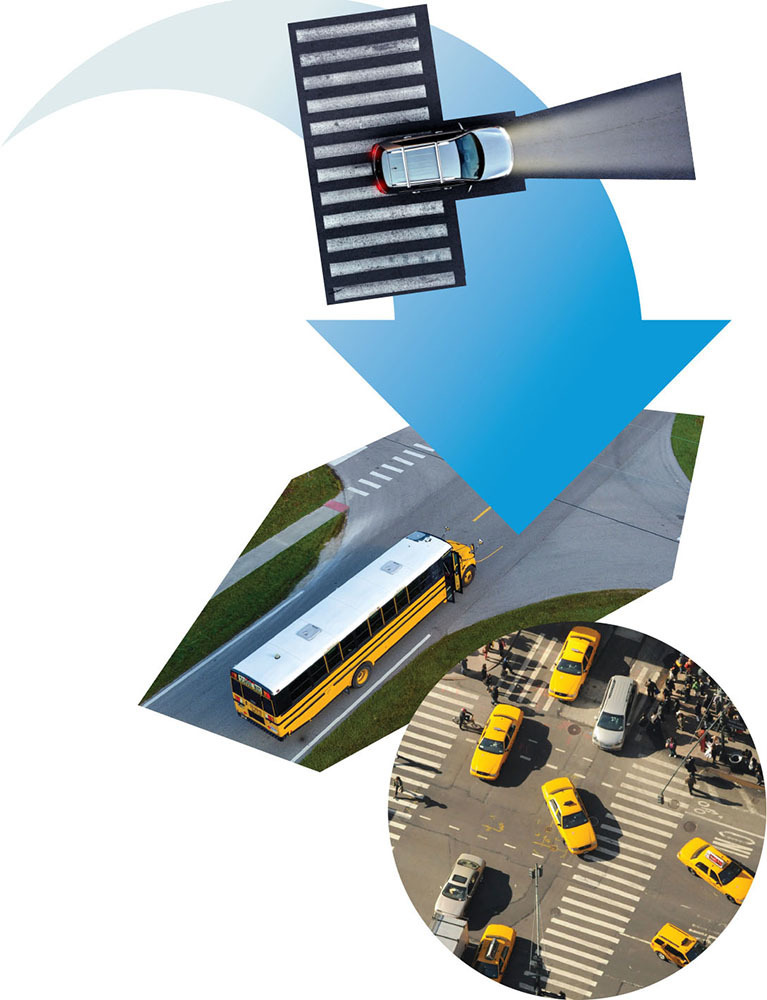December 2013
COMMUNITIES: GOVERNMENT
Forewarning for California Quakes?
 Imagine that before an earthquake hits, you receive an alert on your smartphone. It tells you how strong the shaking will be and counts down the time before it begins. You have from seconds to minutes (depending on distance from the epicenter) to prepare yourself. In addition, the system has control over automated processes. For instance, if you’re in an elevator, it stops at the nearest floor and lets you out.
Imagine that before an earthquake hits, you receive an alert on your smartphone. It tells you how strong the shaking will be and counts down the time before it begins. You have from seconds to minutes (depending on distance from the epicenter) to prepare yourself. In addition, the system has control over automated processes. For instance, if you’re in an elevator, it stops at the nearest floor and lets you out.
Such a system is not a distant vision. It exists in countries such as Japan and is being developed in the U.S. In September, California Governor Jerry Brown signed a bill requiring the Office of Emergency Services to develop a statewide earthquake early warning system. A collaboration of academic and government institutions has been working on a demonstration system for about seven years. But challenges remain—primarily the funding to develop a robust, working public version.
Partners including the University of California’s Berkeley Seismological Laboratory, the California Institute of Technology, and the U.S. Geological Survey (USGS) have been developing such a system, called ShakeAlert, that uses a network of seismic sensors. The University of Washington recently joined the partnership to broaden the effort along the coast.
The system incorporates only the warning component and runs as a computer applet. But an Android version for smartphones is under development, which will also include the ability to collect data back from the phones using the integrated accelerometer.
“This has the potential to really transform earthquake engineering,” says Thomas Heaton, director of the Earthquake Engineering Research Laboratory at Caltech, “because in future earthquakes, we’ll have vibration data from virtually every building in the city.” Heaton has been working on the project since he first wrote a paper in Science in 1985 describing what such a system might look like.
But a public system will be very different than the current demonstration system, points out Jennifer Strauss, external relations officer at the Berkeley Seismological Laboratory. For one thing, it will need to include alerts on television, radio, and public address systems. It will also need to incorporate backups in case of failures. And it will need to have more people manning it, she continues, because “earthquakes don’t only happen nine to five.”
In addition, an education campaign will be key, says Strauss, so that people will know what to do when they receive an alert.
The California Office of Emergency Services has been tasked with securing funding for the warning system. The system’s initial cost is estimated at about $80 million. That includes the cost of increasing the number of sensors and staff, plus operations costs for the next five years. After that, the operation cost should be around $12 million annually, Strauss says.
Still to be determined is who will operate such a system. USGS is the natural choice, Heaton explains, but its budget may not stretch to cover the costs.
But Strauss is optimistic because the legislation’s passage has given the effort momentum, she says. “Certainly you don’t want to hear that this law has been passed, and in 10 years you have an earthquake and no one did anything about it.”
In addition to aiding human safety, the system would save money by minimizing physical damage, she points out. She believes that pressure from businesses, which will benefit from improved continuity and risk management, will help the effort. Eventually, she hopes the system will extend not only up the West Coast but to all of the U.S.
Japan’s system provided seconds of warning in 2011’s magnitude 9.0 Tohoku earthquake. Fifty-two million people received the warning on their smartphones and the system stopped bullet trains safely and shut down critical manufacturing operations.
“It should be a no brainer,” notes Strauss.
Says Heaton: “I always tell my colleagues, ‘Let’s stop talking about it and just do it. It’s our destiny.’”
Examples of Early Warning System Uses
Transportation. Slowing or stopping trains, halting airplane traffic, closing bridges, slowing or stopping traffic via signals.
Utilities. Opening or closing critical pipeline valves, shutting down systems, rerouting power, ensuring staff are in safe positions.
Construction. Putting cranes and lifts in safe positions, moving people away from unsafe locations.
Industrial. Closing valves, slowing or stopping production lines and sensitive processes, ensuring employees move away from hazardous materials.
Source: www.shakealert.org.


 Volunteering at NSPE is a great opportunity to grow your professional network and connect with other leaders in the field.
Volunteering at NSPE is a great opportunity to grow your professional network and connect with other leaders in the field. The National Society of Professional Engineers (NSPE) encourages you to explore the resources to cast your vote on election day:
The National Society of Professional Engineers (NSPE) encourages you to explore the resources to cast your vote on election day:




